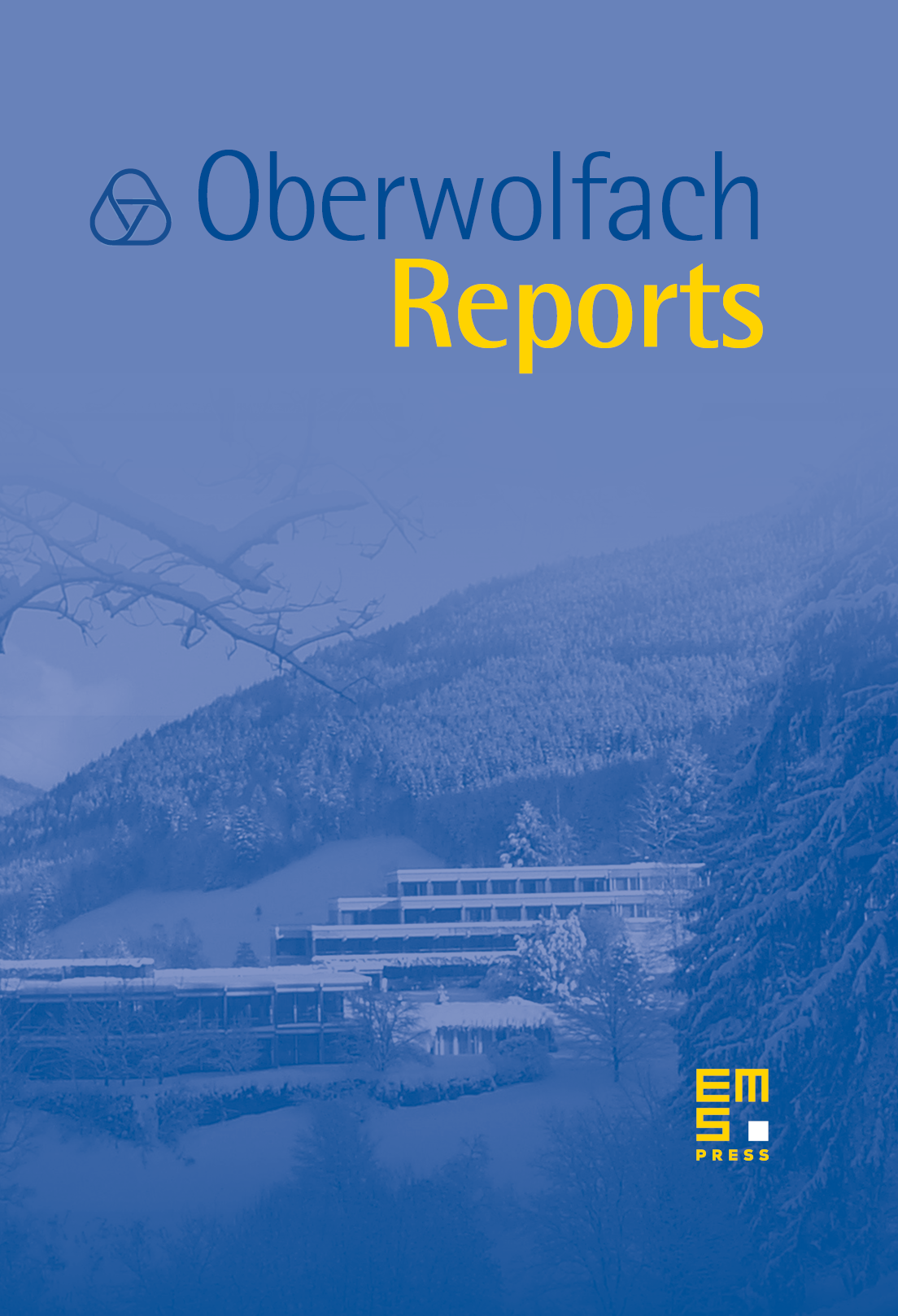Geometric Group Theory, Hyperbolic Dynamics and Symplectic Geometry
Gerhard Knieper
Ruhr-Universität Bochum, GermanyLeonid Polterovich
Tel-Aviv University, IsraelLeonid Potyagailo
Université Lille I, Villeneuve d'Ascq, France

Abstract
The workshop Geometric Group Theory, Hyperbolic Dynamics and Symplectic Geometry, organized by Gerhard Knieper, Leonid Polterovich and Leonid Potyagailo brought together leading mathematicians working in these rapidly developing fields. The scientific goal of the workshop was twofold: first, to present some recent breakthroughs, and, second, to discuss and digest a surprisingly fruitful interaction of these seemingly remote mathematical disciplines. The topics of talks included rigidity of group actions (A. Katok, D. Witte Morris, M. Kanai), ergodic properties of group actions ( U. Hamenstädt, V. Kaimanovich), dynamics on homogeneous spaces (S. Mozes), hyperbolic groups and hyperbolic manifolds (G. Courtois, F. Dahmani, M. Kapovich, I. Mineyev, N. Peyerimhof), hyperbolic dynamics ( D. Kotschick, G. Paternain, M. Pollicott), geodesic flows (H. Koehler, E. Leschinsky ), asymptotic geometry of finitely generated groups and Lie groups (E. Breuillard, G. Margulis).
Interestingly enough, quasi-morphisms – a group theoretical notion which was originated in the framework of bounded cohomology theory, arose in the lectures of several researchers in quite a different context. Quasi-morphisms were discussed by M. Burger and A. Iozzi from the viewpoint of representation theory and by D. Calegari and K. Fujiwara who studied commutator length on hyperbolic groups and mapping class groups. At the same time M. Entov, G. Ben Simon and P. Py discussed their appearance and applications in the framework of symplectic topology.
The workshop witnessed another interesting trend. It seems that geometric group theory is trying to conquer a new area: bi-invariant geometries on groups of diffeomorphisms were discussed by D. Burago and D. McDuff. Some talks reflected a fruitful application of a powerful tool of modern symplectic topology, Floer homology, to “non-traditional” (from the symplectic viewpoint) areas such as the study of topological entropy of Reeb flows (F. Schlenk) and theory of the mapping class groups (A. Fel'shtyn). Some very recent developments in the foundation of Floer theory were presented by O. Cornea.
An important feature of the workshop was the presence of many excellent students from several countries who had an indispensable opportunity to profit from the intense interaction with the established mathematicians. In fact the students contributed a lot to the success of the workshop by active participation in the discussions. Some of the students gave high quality talks on their results during informal “late night” sessions.
One of the hightlights of the meeting was the open problem session on Wednesday night, skillfully moderated by Anatole Katok, where many participants formulated questions and research programs which, as we believe, will develop our fields.
Cite this article
Gerhard Knieper, Leonid Polterovich, Leonid Potyagailo, Geometric Group Theory, Hyperbolic Dynamics and Symplectic Geometry. Oberwolfach Rep. 3 (2006), no. 3, pp. 1991–2058
DOI 10.4171/OWR/2006/33